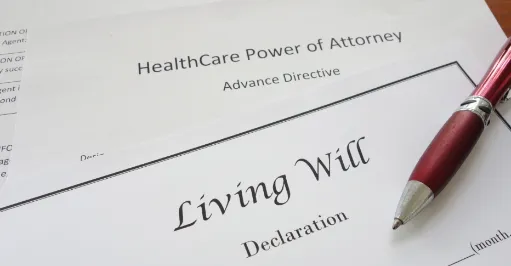One of the main goals of estate planning is to minimize the amount of taxes owed on your death. You can accomplish this through various means, including gifting assets during your lifetime, setting up trusts, and carefully selecting beneficiaries. As the saying goes, those who don’t plan ahead are the ones who end up paying the most in taxes. Proper planning can minimize them significantly. By taking the time to plan your estate now, you can save your loved ones a lot of money down the road.
A recent article from Financial Advisor entitled “Estate Planning In This Particular Time of Uncertainty” offers strategies and estate planning techniques to be considered during these volatile times.
Gifting Assets into Irrevocable Trusts to Benefit Family Members. Generally, when you die, your estate is not subject to the federal estate tax if the value of your estate is less than the exemption amount. If done correctly, this removes the current value and all future appreciation of these assets from your estate. For people who pass away in 2022, the Federal estate exemption amount is $12.06 million (for the New York Estate tax, that amount is $6.11 million for a New York resident). With the federal estate tax exemption ending at the end of 2025, the exemption is set to drop from $12.06 million per person to nearly half that amount ($5 million adjusted for inflation).
Combine this with a time of volatile asset prices, and it becomes pretty obvious: this would be an excellent time to make investments with a lowered value out of the individual owner’s hands and gift them into an irrevocable trust. The lower an asset’s value at the time of the gift, the less of one’s lifetime exemption is utlized. This strategy makes even more sense if investments are expected to recover and appreciate.
Spousal Limited Access Trust (SLAT). This may be a good time for a related technique, the SLAT, an irrevocable trust created by one spouse to benefit the other and, often, the couple’s children. Access to income and principal is made during the spouse’s lifetime. It can even be drafted as a dynasty trust. Assets can be gifted out of the estate to the trust, and while the grantor (the person creating the trust) cannot be a beneficiary, their family can. Couples may also create reciprocating SLATs, where each is the beneficiary of the other’s trust, as long as they are careful not to create duplicate trusts, which have been found invalid by courts. Talk with an experienced estate planning attorney about how a SLAT may work for you and your spouse.
What about interest rates? A Grantor Retained Annuity Trust (GRAT), where the grantor contributes assets and enjoys a fixed annuity stream for the life of the trust, may be advantageous now. At the end of the trust term, the remaining assets are distributed to family members or a trust for their benefit. To avoid a gift tax on the calculated remainder due when the trust is created, most GRATs are “zeroed out,” that is, the present value of the annuity stream to the grantor is equal to the amount of the initial funding of the trust. Since you get back what’s been put in, no taxable gift occurs. The lower the interest rate, the higher the value of the income stream. The grantor can take a lower annuity amount, and with a decent appreciation of assets in the trust, there will be a larger amount as a remainder for heirs. Interest rates need to be considered when looking into GRATs.
Qualified Personal Residence Trust (QPRT) is a trust that transfers a primary residence to beneficiaries with minimal gift tax consequences. The grantor retains the right to live in the house at no charge for a certain period. After the period ends, the property and any appreciation in value pass to beneficiaries. The valuation for the value of the initial transfer into the trust for gift tax purposes is determined by a calculation relying heavily on interest rates. In this case, a higher interest rate results in a lower present value of the remainder and a lower gift value when the trust is created.
Annual Gifts Remain a Good Planning Option.
2022 is shaping up to be a great year for gift-giving. Thanks to an increase in the federal annual gift tax exclusion amount, U.S. couples can now gift up to $32,000 to a non-spouse family member without using up any of their federal estate and gift tax exemption. That’s an extra $1,000 that can be used to help out a loved one or celebrate a special occasion. And while New York does not have a gift tax, it requires that gifts made within three years of death be brought back into the decedent’s estate for computing the New York estate tax. So if you’re thinking about making a significant gift in 2022, it’s essential to keep this rule in mind. But overall, the increased gift tax exclusion amount is good news for those who like to give (and receive) gifts.
To learn more or discuss how your estate plan should be structured to best protect you, contact us today!
Reference: Financial Advisor (July 8, 2022) “Estate Planning In This Particular Time of Uncertainty”





